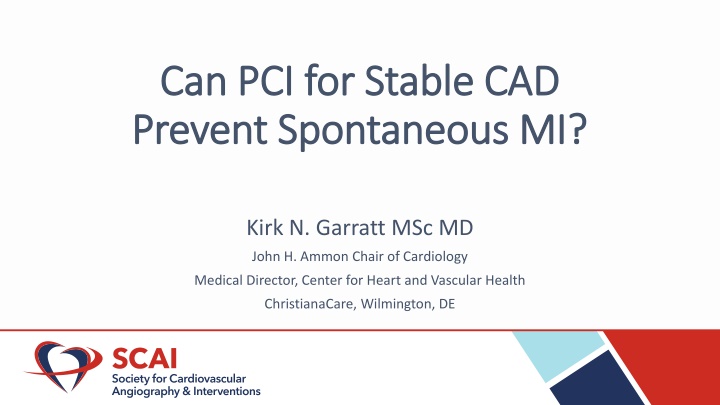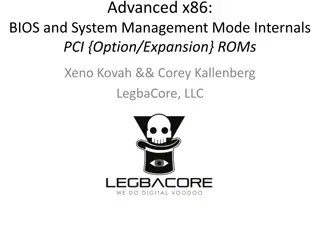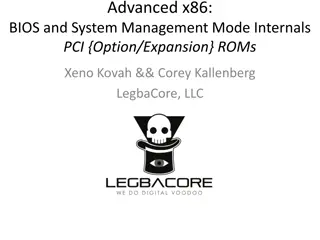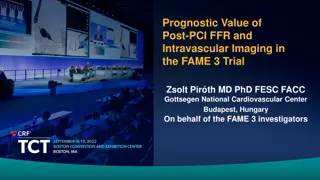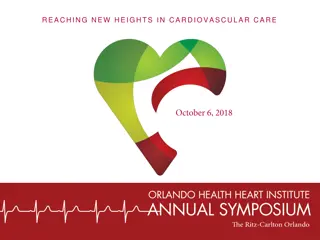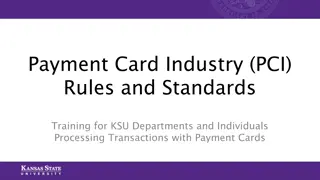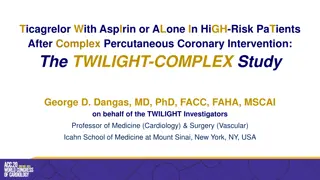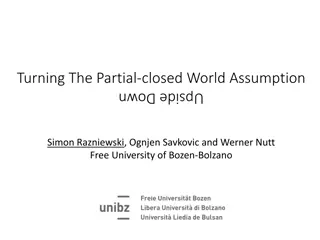Can PCI for Stable CAD
Stable Ischemic Heart Disease patients often undergo PCI for treatment, but studies such as COURAGE have shown no added benefit in terms of mortality or MI prevention. However, more recent research like the FAME 2 trial has demonstrated positive outcomes in reducing death and myocardial infarction post-PCI. Understanding the role of PCI in preventing spontaneous MI in stable CAD patients is crucial for informed decision-making.
Download Presentation

Please find below an Image/Link to download the presentation.
The content on the website is provided AS IS for your information and personal use only. It may not be sold, licensed, or shared on other websites without obtaining consent from the author.If you encounter any issues during the download, it is possible that the publisher has removed the file from their server.
You are allowed to download the files provided on this website for personal or commercial use, subject to the condition that they are used lawfully. All files are the property of their respective owners.
The content on the website is provided AS IS for your information and personal use only. It may not be sold, licensed, or shared on other websites without obtaining consent from the author.
E N D
Presentation Transcript
Can PCI for Stable CAD Can PCI for Stable CAD Prevent Spontaneous MI? Prevent Spontaneous MI? Kirk N. Garratt MSc MD John H. Ammon Chair of Cardiology Medical Director, Center for Heart and Vascular Health ChristianaCare, Wilmington, DE
Disclosures No disclosures relevant to this presentation
Stable Ischemic Heart Disease Stable Ischemic Heart Disease
What Do Older Studies Tell Us About PCI What Do Older Studies Tell Us About PCI In SIHD Patients? In SIHD Patients? Katritsis DG, et al. Circulation 2005;111:2906-12
COURAGE COURAGE North American RCT 19 US non-VA hospitals 15 VA hospitals 16 Canadian hospitals Compared OMT with OMT + PCI in stable angina patients Enrolled 2287 pts 6/99-1/04 Primary endpoint: Death or MI No benefit with PCI for death, MI, or combination Boden WE, et al. NEJM 2007;356:1503-16
The Trouble With COURAGE, et al The Trouble With COURAGE, et al
Stable CAD Patients With 1, 2 or 3 Vessel PCI Stable CAD Patients With 1, 2 or 3 Vessel PCI Scheduled for DES N=1220 FAME 2 FAME 2 DES FFR in all target lesions FFR in all target lesions RCT 73% enrolled pts At least 1 stenosis with At least 1 stenosis with FFR 0.08 FFR 0.08 N=888 pts 1304 qualified lesions 1304 qualified lesions All FFR >0.8 N=332 Registry 27% enrolled pts Registry R R PCI + OMT I + OMT N=447 OMT OMT N=447 Follow up after 1 & 6 Follow up after 1 & 6 mo mo, 1, 2, 3, 4 and 5 years , 1, 2, 3, 4 and 5 years DeBruyne B, et al. NEJM 2014;371:1208-17
FAME 2 FAME 2 Death or myocardial Death or myocardial infarction infarction DeBruyne B, et al. NEJM 2014;371:1208-17
FAME 2 FAME 2 Triggers of Urgent Revascularization DeBruyne B, et al. NEJM 2014;371:1208-17
FAME 2 FAME 2 Myocardial infarction Myocardial infarction Adjusted Hazard Ratio = 0.66 (0.43-1.0) Xaplanteris P, et al. NEJM 2018;379:250-9
ISCHEMIA Trial ISCHEMIA Trial Maron DJ , et al NEJM 2020; DOI: 10.1056/NEJMoa1915922
ISCHEMIA Trial ISCHEMIA Trial Maron DJ , et al NEJM 2020; DOI: 10.1056/NEJMoa1915922
ISCHEMIA Trial ISCHEMIA Trial Adjusted Hazard Ratio = 0.67 (0.53-0.83) P <0.01 Maron DJ , et al NEJM 2020; DOI: 10.1056/NEJMoa1915922
What Does It All Mean? What Does It All Mean? Older RCTs did not show PCI lowered spontaneous MI rates Likely explanation = selection bias to exclude patients at highest risk for this event ISCHEMIA trial an important advance Initial invasive care results in about 1/3 fewer spontaneous MIs over 5 years in patients with SIHD compared with conservative medical therapy Concordant with benefit suggested by FAME II When high-risk patients are not selected out of trials, benefit for effective therapies are easier to demonstrate
